I’ve just finishing reading Orhan Pamuk’s Museum of Innocence. It is one of the most powerful novels I’ve read. I’m actually quite sad that I’ve finished it. Each day I found myself compelled to sit down and read as much as I could. I was enthralled and engaged in a way that doesn’t happen very often. Orhan Pamuk writes about his city, the city of Istanbul, in a lyrical and poetic way. He writes about growing up in a city of tradition and pride. A city that is in conflict with itself. A city proud of its Turkish and Stambuli culture and traditions and yet at the same time a city that yearns to be ‘western’ and more open in its approach to modern life. He writes about love and yearning and passion and social structures that cannot be breached. He writes about vulnerability and truth.

Istanbul sits on the shores of the Bosphorus. A body of water that separates Europe from Asia. The currents in the Bosphorus are powerful and strong. To the west is the Mediterranean and to the east is the Black Sea. This is a place where two continents meet, a place where eastern and western cultures collide. It is the place where, in geographical terms, Europe comes to an end and Asia begins. A city with thousands of years of history and several name changes too; Byzantium, Constantinople and finally Istanbul. This city was the terminus for the Simplon Orient Express train beloved by Agatha Christie and her archaeologist husband Max Mallowan. A cosmopolitan city of contrasts and shadows, spices and scents, balanced on the threshold of the oriental and exotic world of the east.


The Museum of Innocence is a love story. The story of a romance between Kemal and Fusun. A love story that persists for decades. The tale begins when Kemal meets Fusun when she is working in a fashionable boutique in a stylish part of Istanbul. He is actually shopping for his girlfriend at the time. Kemal’s family are wealthy and part of Istanbul’s elite society. Fusun is from a more modest background, her mother is a seamstress and has worked for Kemal’s mother on several occasions. In fact, Fusun is a distant relative of Kemal’s.
As the story begins, Kemal is a young ‘man about town’ driving through the streets of the city in his father’s stylish American Chevrolet car. He has a serious girlfriend called Sibel and is destined, in the eyes of many to marry Sibel. However this doesn’t stop him from having fun. He socialises constantly, with and without Sibel. He has a wide network of male friends and a very relaxed approach to his long-standing girlfriend. Whilst he accepts that his future life with Sibel is inevitable he is no hurry to purchase a ring.
Kemal’s relationship with Fusun begins as a casual affair. He meets her regularly for a couple of hours in an unoccupied apartment owned by his family. The apartment is actually a key character in the novel. It is a treasure trove of unwanted and discarded household items, a memorial to Kemal’s family and their life over the years. This is where his mother’s old dresses and shoes come to die. Where childhood toys are sent to languish. An Aladdin’s cave of family history and souvenirs. The role of the apartment as the hallowed meeting point of Kemal and Fusun becomes more and more significant as the novel progresses.
The city of Istanbul and its people play a key role in the ‘Museum of Innocence’ too. Pamuk portrays the city as a cosmopolitan, chaotic mixture of history and modernity. A city of strong traditions and family values. A city where marriages must take place between social equals and where the sanctity of the family is enshrined in stone. There is one rule for men and quite another for women. A philandering husband is virile and fun-loving, whereas a similar woman would be rapidly divorced and outcast from society. Women are not independent, their status is defined by their husband and their family’s wealth.
Kemal’s social circle are the wealthy and privileged children of Istanbul’s business community. The sons and daughters of factory owners, property magnets and entrepreneurs. As the bright young things drive across the Bosphorus Bridge which links the European part of Istanbul with the Asian side of the city, the water flowing below swirls and eddies like young Turkish couples on the dance floor of a crowded nightclub. Life for these kids is good, they are well-educated, affluent and smartly dressed. They are the golden youth of Istanbul. The assumption is that a rich and happy life is their automatic right. This reminded me of Tom and Daisy in ‘The Great Gatsby’ who were wealthy and empowered and ‘careless with other people’s lives’ especially those who were not part of their social circle.
This novel is full of surprises, twists and turns. Kemal’s affair with Fusun is short-lived but his emotional attachment to her endures forever. In fact it strengthens over time. Kemal develops an obsession with Fusun and the happy times they had together. He develops an increasing interest in the contents of the apartment where he and Fusun spent many hours. These artefacts associated with Fusun including earrings, tea cups, even cigarette stubs, become vitally important to Kemal. His relationship with these physical objects could best be described as fanatical. Interestingly, Pamuk the author, has always had an interest in ‘collections’ and visited many idiosyncratic museums including the ‘Museo Bagatti Valsecchi’ in Milan during his research and writing of ‘The Museum of Innocence’.
When Orhan Pamuk began to write the ‘Museum of Innocence’ he conceived it as a novel and also as a physical collection of memories and souvenirs. A real assembly of bits and pieces associated with Fusun, Kemal and most importantly the city of Istanbul. ‘The Museum of Innocence’ book was published in 2008, written in Turkish and entitled: ‘Masumiyet Musezi’ the English translation came a year later in 2009.
Then in 2012 Orhan Pamuk opened the actual and physical Museum of Innocence in the Cukurcuma neighbourhood of Istanbul. This is a house, a real building, in a traditional part of the city, where Pamuk’s extensive collection of memorabilia is displayed. Readers of early editions of the book were treated to a complimentary entry ticket to the Museum – printed inside the pages of the novel. When I bought my copy of the book my complimentary ticket to the real museum was on page 521!

As the reader’s journey through the book progresses the visual associations with objects, physical objects, clothing, photographs, hair clips, cigarette stubs, becomes more and more intense. Pamuk’s desire to share with the reader, not only a story, but also a physical collection of things, memories, bits and pieces and in reality, elements of the city of Istanbul too, becomes overwhelming.
The ‘Museum of Innocence’ as an original concept is brilliantly conceived. The novel is lyrical, detailed and poignant. I’ve yet to visit the actual, physical Museum of Innocence. It is my intention to do that next time I visit Istanbul. Meanwhile I’m reading ‘Istanbul’ Orhan Pamuk’s poetic and endearing reflection on his home town, his city, his soul. I can’t wait for my next visit to Istanbul and to discover the actual, physical Museum of Innocence.
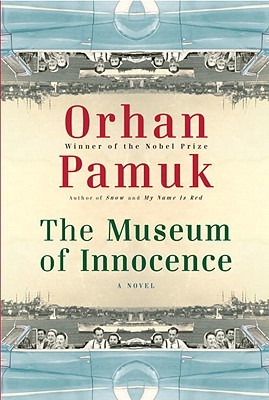


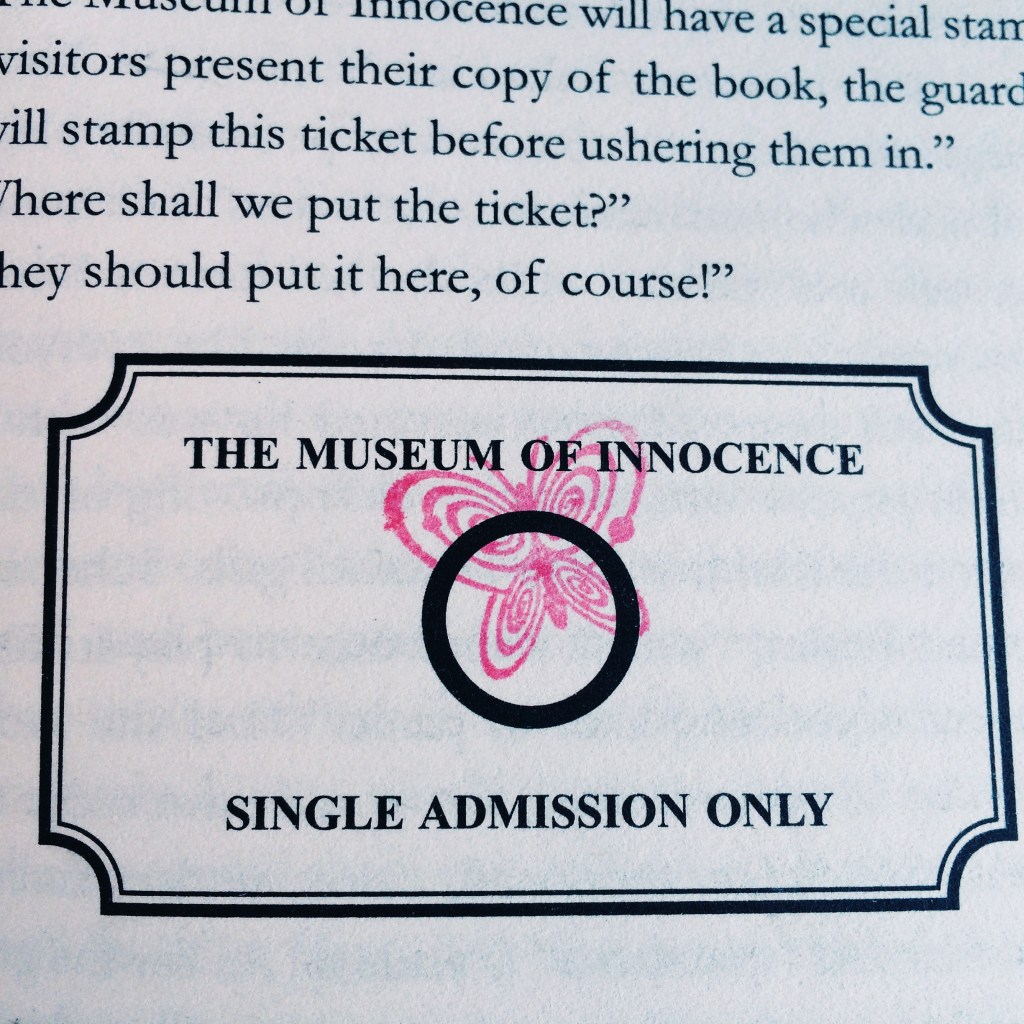

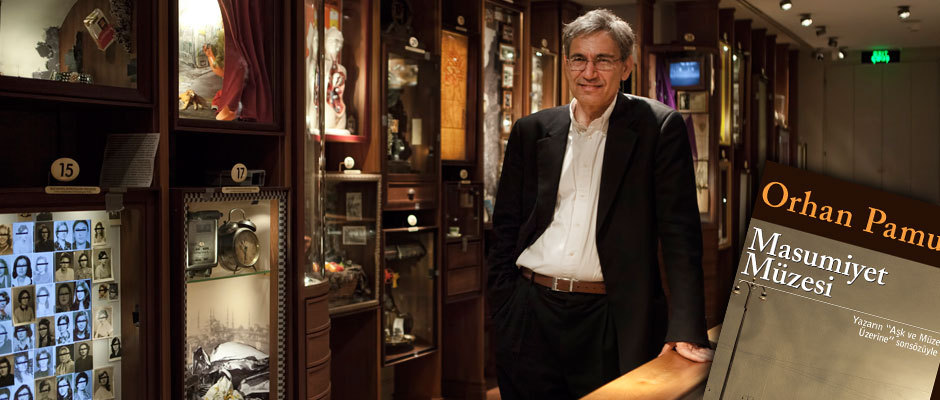
***STOP PRESS*** Since writing and publishing this article several years ago – I discovered that the ‘Museo Bagatti Valsecchi’ in Milan hosted an exhibition featuring some of the display cases from the Museum of Innocence in Istanbul. It was a short exhibition that ran from January to June, 2018. Various of the glass display cases that normally occupy pride of place in the Istanbul museum where shipped to Milan for temporary display. I then learned that the Milan museum and its collection influenced Orhan Pamuk greatly when he was writing his novel. The Milan museum occupies an elegant town house in the historic centre of the city, filled with furniture, paintings and art assembled by the Bagatti brothers in the 19th century. The museum is unique because it is a 19th century house filled with artefacts from the 16th century. It is a 19th century attempt to create an authentic house of the mid 16th century. It is a re-imagining of the past. In the words of the creator, Giuseppe Bagatti Valsecchi,
‘…The intention was not to create a museum or a collection, but to reconstruct a lordly mansion of the mid 16th century in which were very disparate objects of the 15th and 16thcenturies: paintings; tapestries; rugs; furniture; arms; ceramics; items of bronze, glass and iron; jewellery, and domestic utensils of every kind, all collected with careful study and returned to their original use…’
DETAIL – About a dozen display cases from The Museum of Innocence, Istanbul were brought to Milan. These glass cases were displayed at ‘Museo Bagatti Valsecchi’ Milan – from January 19 to 24 June, 2018. It is fascinating and very appropriate because this museum in Milan enchanted Orhan Pamuk whilst he was curating his own collection of thoughts, in both the ‘Museum of Innocence’ as a novel and also as a real museum. Pamuk visited the ‘Bagatti Valsecchi’ several times whilst he was writing his novel. So the connections between Pamuk, Milan and Istanbul and these two very special ‘museum’ collections runs rich and deep.
Here are a couple of the display cabinets that are normally to be found in the Museum of Innocence, Istanbul but were briefly on display at The Museo Bagatti Valsecchi, Milano
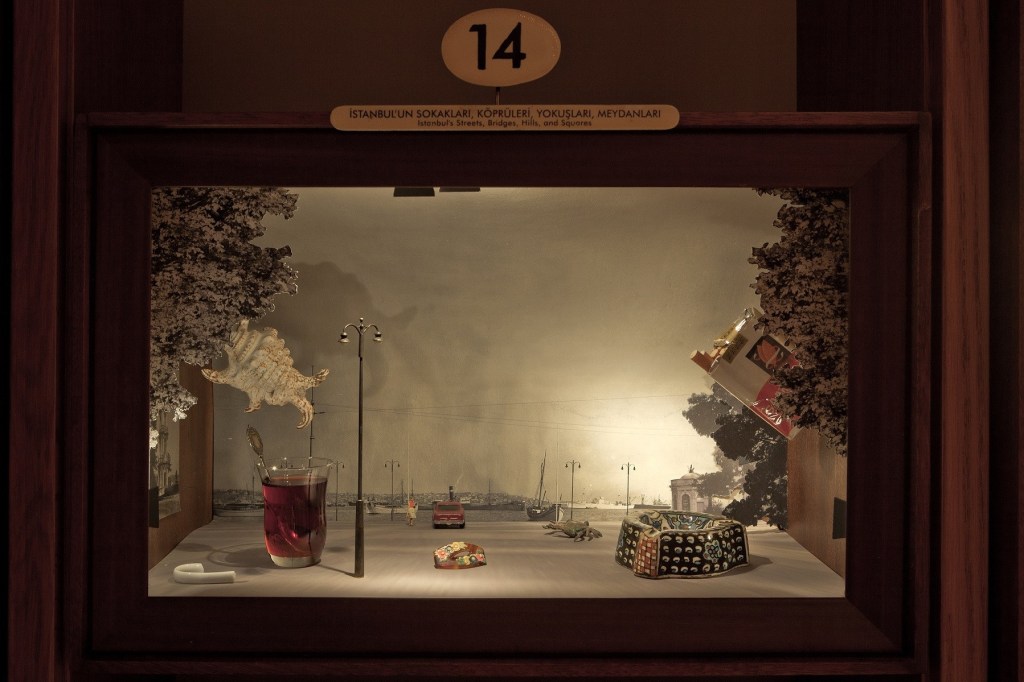

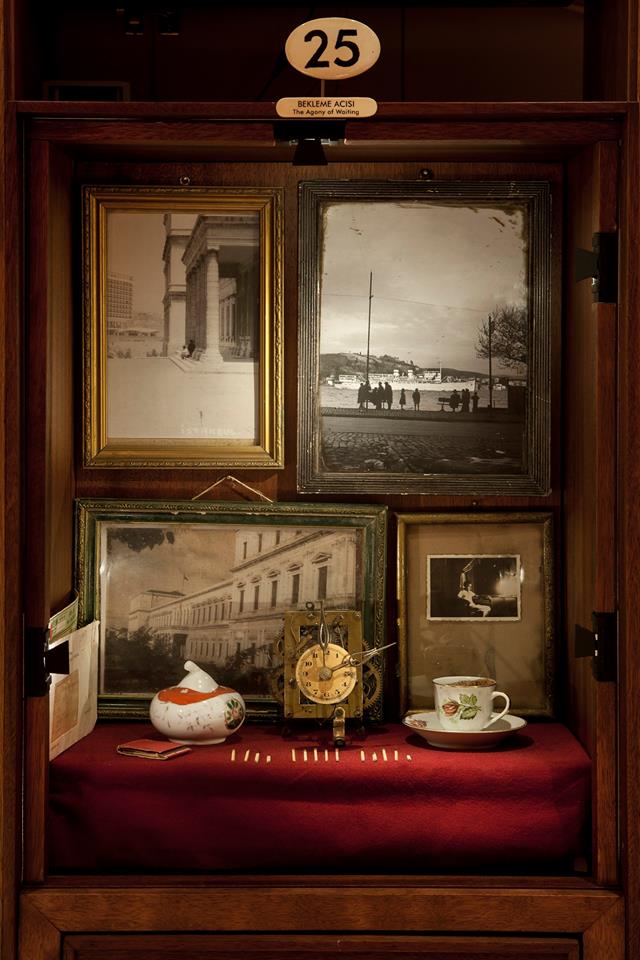
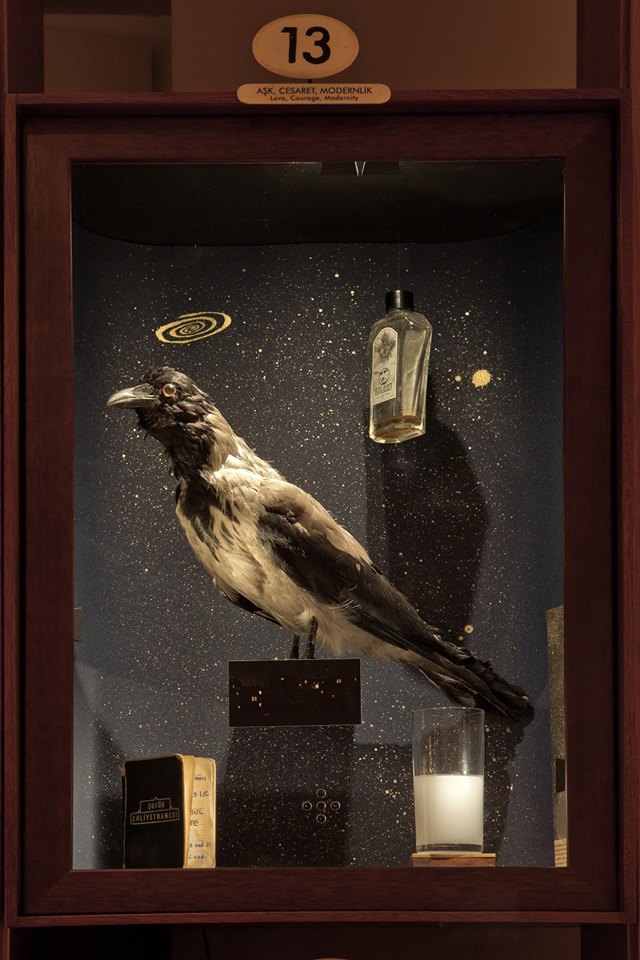
For the full article on the upcoming exhibition: Love, Museums and Inspiration. Orhan Pamuk’s Museum of Innocence in Milan
TALKING POINT – Why not think about the four characters in the novel – Fusun / Kemal / Istanbul / The Apartment (later the Museum). What aspects of each ‘character’ assists the reader’s understanding of 20th century Turkish life?
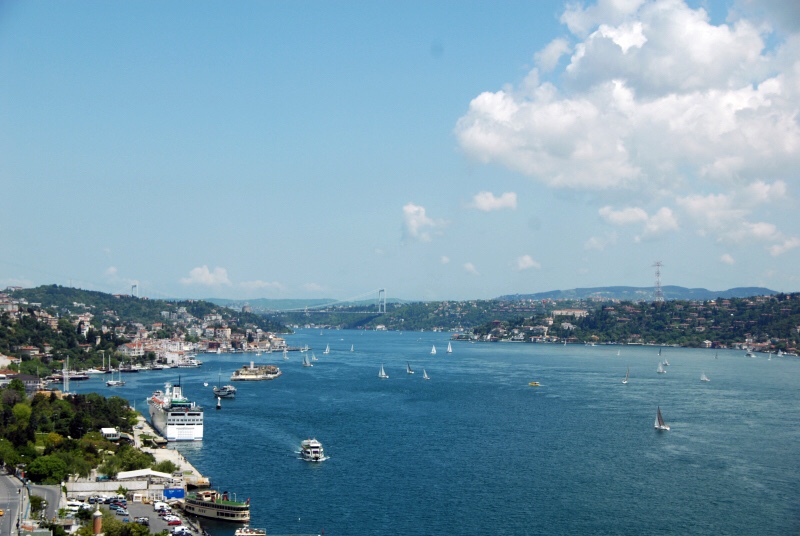

The Bosphorus is a busy, beautiful waterway linking the Mediterranean Sea with the Black Sea. Lined with houses, the views are spectacular. There are two bridges crossing the Bosphorus and linking the European side with the Asian side.

Further reading on the ‘Museum of Innocence’:
- For more on the Museum of Innocence in Istanbul – as it celebrated it’s first birthday just over a year ago: Orhan Pamuk’s Museum of Innocence celebrates first anniversary https://www.hurriyetdailynews.com/orhan-pamuks-museum-of-innocence-celebrates-first-anniversary-45940
- Here’s a review of the Milan exhibition at the time: Love, Museums and Inspiration. Orhan Pamuk’s Museum of Innocence in Milan
- Educated Traveller is a blog about travel, people, history and culture with a focus on Italy, The Alps, Mediterranean & Middle East.
- 29-12-2017 – published
- 05-01-2018 – updated
- 05-10-2020 – updated
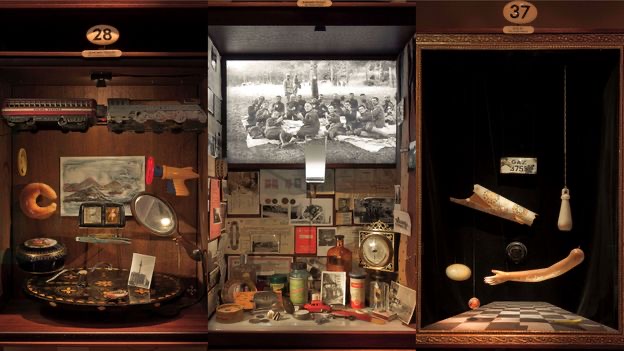
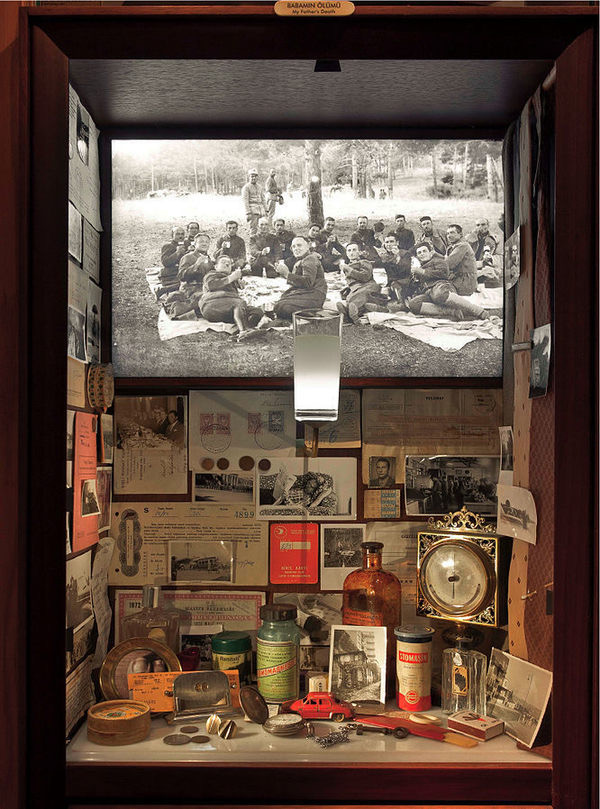
Very interesting story, thanks.
LikeLike
What a great review!!
LikeLiked by 1 person